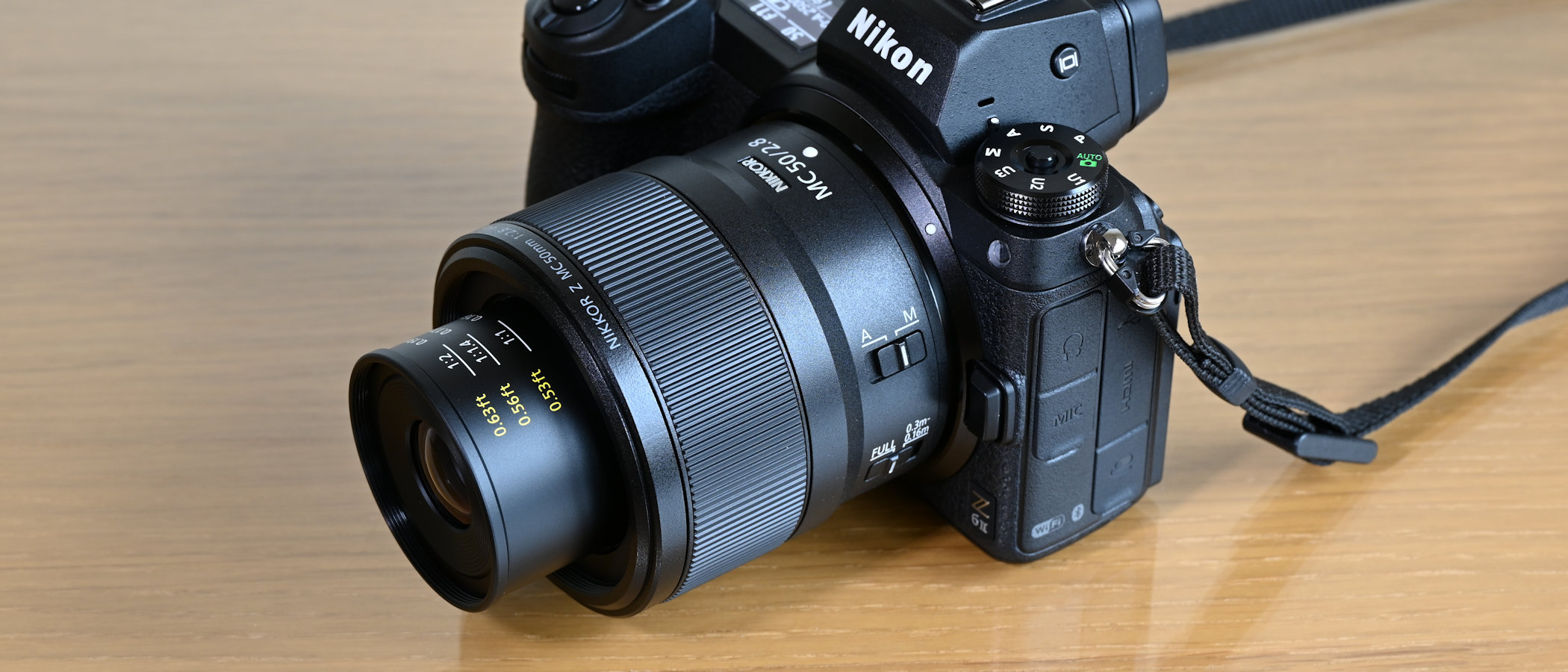Digital Camera World Verdict
This 50mm f/2.8 standard prime is great for general shooting. It’s conveniently compact and lightweight, and a full f/stop faster than Nikon’s Z 24-70mm f/4 S zoom that’s supplied as a kit lens with full-frame Z-series bodies. Its main claim to fame, however, is that it delivers full 1.0x macro magnification at its shortest focus distance, enabling extreme close-ups. As usual for a macro lens of this focal length, the minimum focus distance might be closer than you like.
Pros
- +
Impressive image quality
- +
Compact, lightweight build
- +
Very precise manual focusing
Cons
- -
Only 2-inch working distance at 1.0x magnification
- -
No optical VR
Why you can trust Digital Camera World
It’s been a long wait for an own-brand Nikon Z-mount macro lens and then, like buses, two come along at once. This one is less than half the physical length and weight of the more pro-grade Nikon Z MC 105mm f/2.8 VR S, and a shade under two-thirds of the price.
With a 50mm focal length and f/2.8 aperture rating, it makes a very convenient standard prime for general shooting. Indeed, at just 75x66mm and 260g, it won’t take up much room in your kit bag or add much to your load. It’s certainly lighter than the Nikon Z 50mm f/1.8 S, which weighs in at 415g, while adding full 1.0x macro capabilities, whereas the bigger lens only manages 0.15x magnification at its shortest focus distance. The MC lens is therefore much more adept at capturing close-ups.
Specifications
Mount: Nikon Z
Full frame: Yes
Image stabilization: No
Autofocus: Yes
Lens construction: 10 elements in 7 groups
Angle of view: 47 degrees
Diaphragm blades: 9
Minimum aperture: f/22-32
Minimum focusing distance: 0.16m
Maximum magnification ratio: 1.0x
Filter size: 46mm
Dimensions: 75x66mm
Weight: 260g
Key features
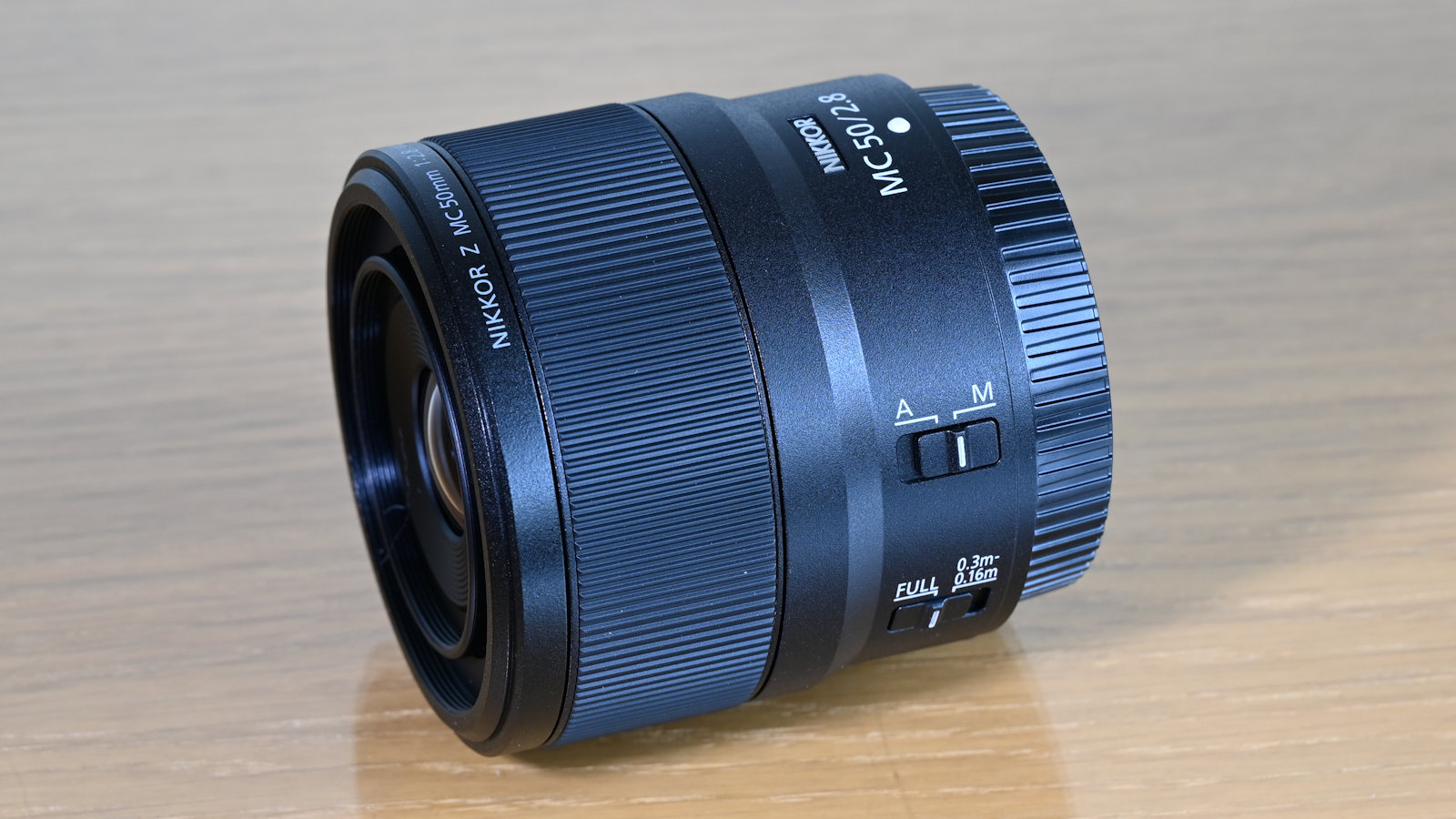
Unlike many 50mm macro lenses down the years, the Nikon delivers full 1.0x macro magnification rather than just a 0.5x magnification factor, therefore reproducing small objects at full life size on the image sensor, and enabling enormous enlargements in print or on screen. Pop the lens on a DX format Nikon Z-series camera like the Z 50 or new Z fc, and the 1.5x crop factor gives you an even larger ‘effective’ magnification factor.
Many modern macro lenses have a fully internal focus mechanism but this one has a more traditional extending inner barrel. There are pros and cons to this. On the plus side, it keeps the physical length to a minimum in general shooting and for stowage, and it enables the lens to feature a rudimentary focus distance scale and magnification factor markings on the inner barrel. You can therefore keep a visual check on these while you’re shooting. The downside is that the minimum focus distance of any 50mm full macro lens is very short, in this case at 0.16m. The extending inner barrel results in the front of the lens coming to just 5cm or 2 inches from what you’re shooting. This can be a bit awkward, especially when you’re trying to shoot bugs and other small creatures, as well as potentially casting a shadow over what you’re shooting.
The lens features 10 elements in 7 groups, including one ED element and one aspherical element. The front element also features a fluorine coating to repel grease and moisture. The overall design is pretty simple and lacks optical VR (Vibration Reduction). This isn’t really a problem when shooting with full-frame Z-series bodies, all of which feature in-body stabilizers, but it can be an issue with the DX format Z 50 and Z fc, which lack IBIS. One useful feature that’s often omitted in 50mm macro lenses is an autofocus range limiter switch, which can lock out the short end of the focus range between 0.16-0.3m.
Build and handling
Build quality feels good although not quite up to Nikon Z S-line standards. The lens has the usual metal mounting plate but lacks comprehensive weather-seals. Handling is refined, with a competent autofocus system that’s based on a quick and virtually silent stepping motor. Often more important for macro shooting, the electronically coupled manual focus ring works with smooth precision, enabling extremely fine adjustments. This works well with the focus peaking display option in Z-series cameras. However, this budget-conscious lens lacks some of the handling exotica of Nikon’s Z MC 105mm f/2.8 VR S, which adds an OLED info screen, customizable lens-function button and multi-function control ring.
Performance
As usual with full macro lenses, the widest available arrow shrinks at very short focus distance, in this case to f/5.6 at full 1.0x magnification. Similarly, the narrowest available aperture shrinks from f/22 to f/32.
The autofocus system is fast and consistently accurate, even for extreme close-ups, where focus accuracy is critical due to the typically tiny depth of field. Centre-sharpness is outstanding even wide-open at f/2.8 and gets even better in the range from f/4 to f/8. Compared with the Z MC 105mm f/2.8 VR S, however, levels of sharpness drop off a little more towards the extreme edges and corners of the frame.
Both axial and lateral chromatic aberrations are entirely negligible and there’s only the merest hint of pincushion. Overall image quality is excellent, throughout the aperture range. At wide apertures the quality of bokeh is pleasing for a 50mm f/2.8 lens, and there’s good resistance to ghosting and flare.
Sample photos
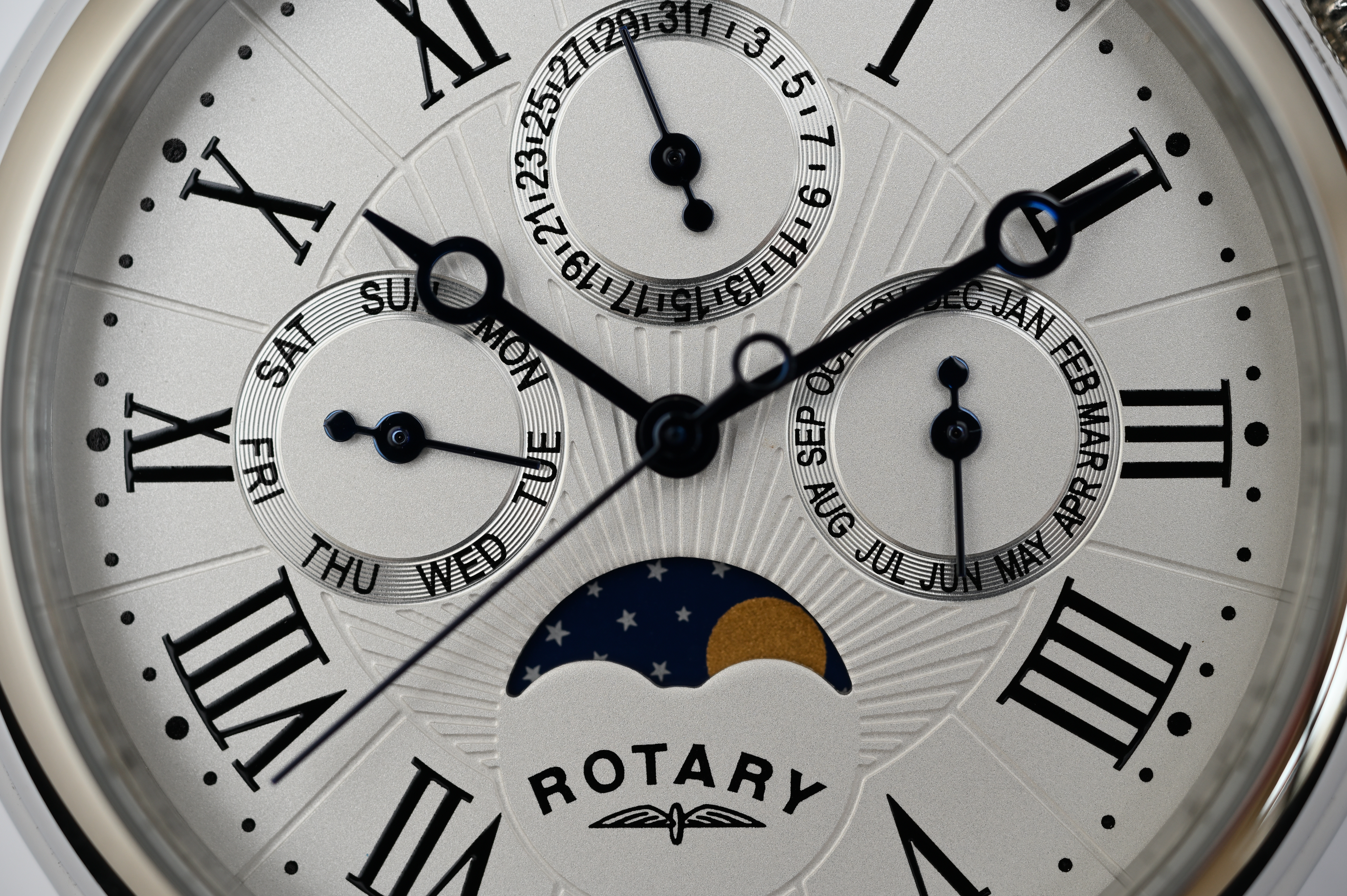

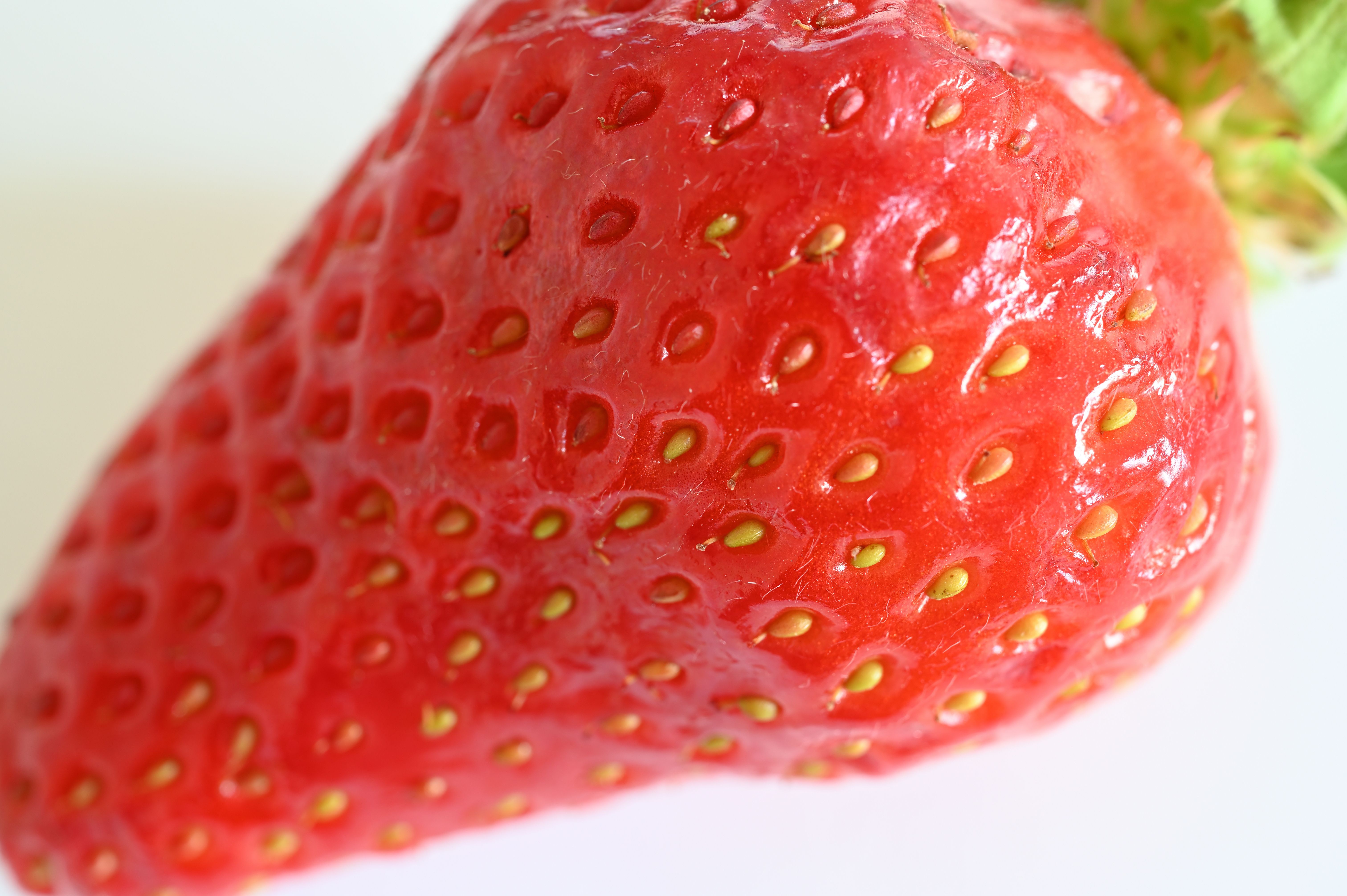
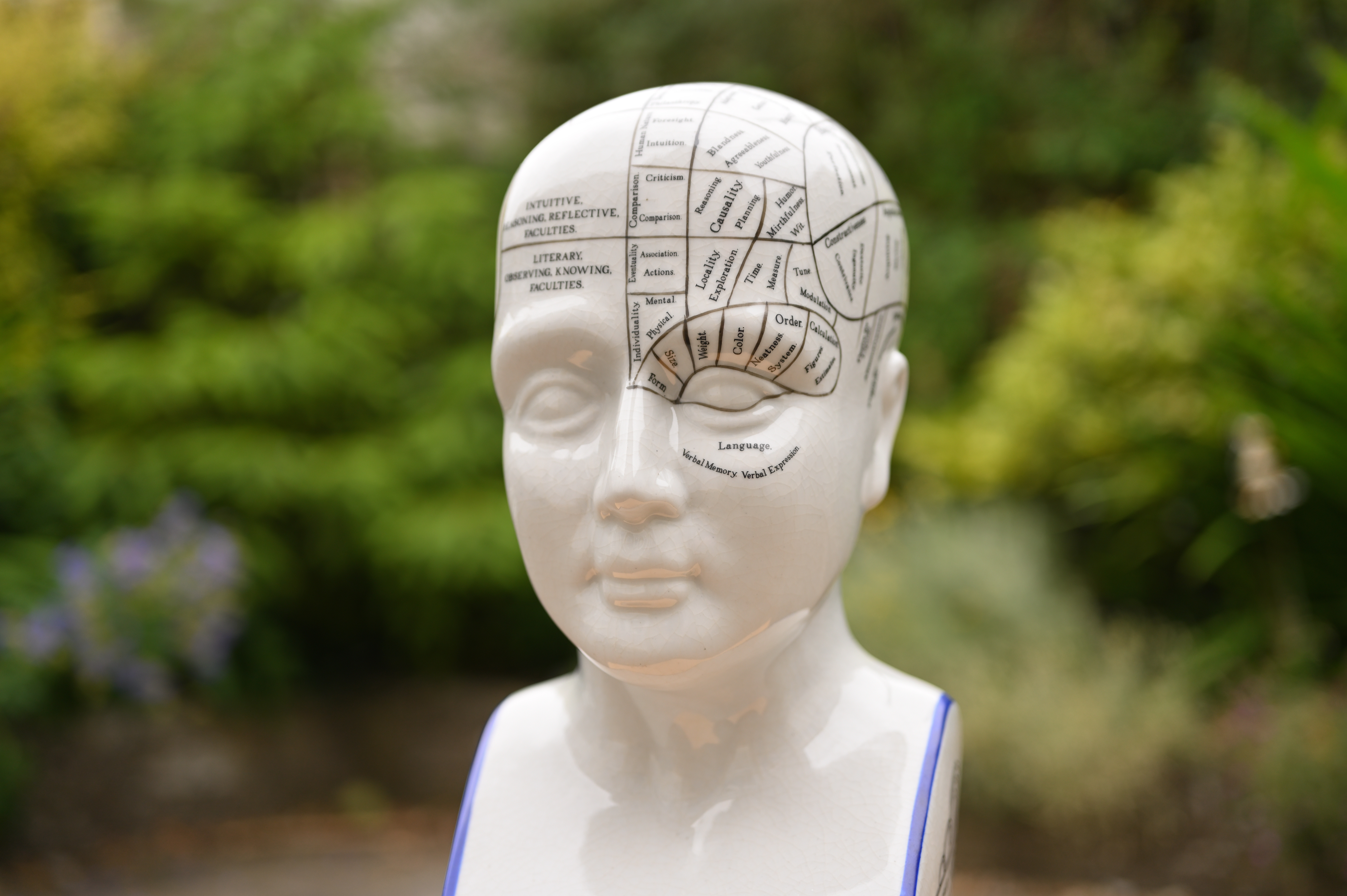
Lab data
We run a range of lab tests under controlled conditions, using the Imatest Master testing suite. Photos of test charts are taken across the range of apertures and zooms (where available), then analyzed for sharpness, distortion and chromatic aberrations.
We use Imatest SFR (spatial frequency response) charts and analysis software to plot lens resolution at the centre of the image frame, corners and mid-point distances, across the range of aperture settings and, with zoom lenses, at four different focal lengths. The tests also measure distortion and color fringing (chromatic aberration).
Sharpness:
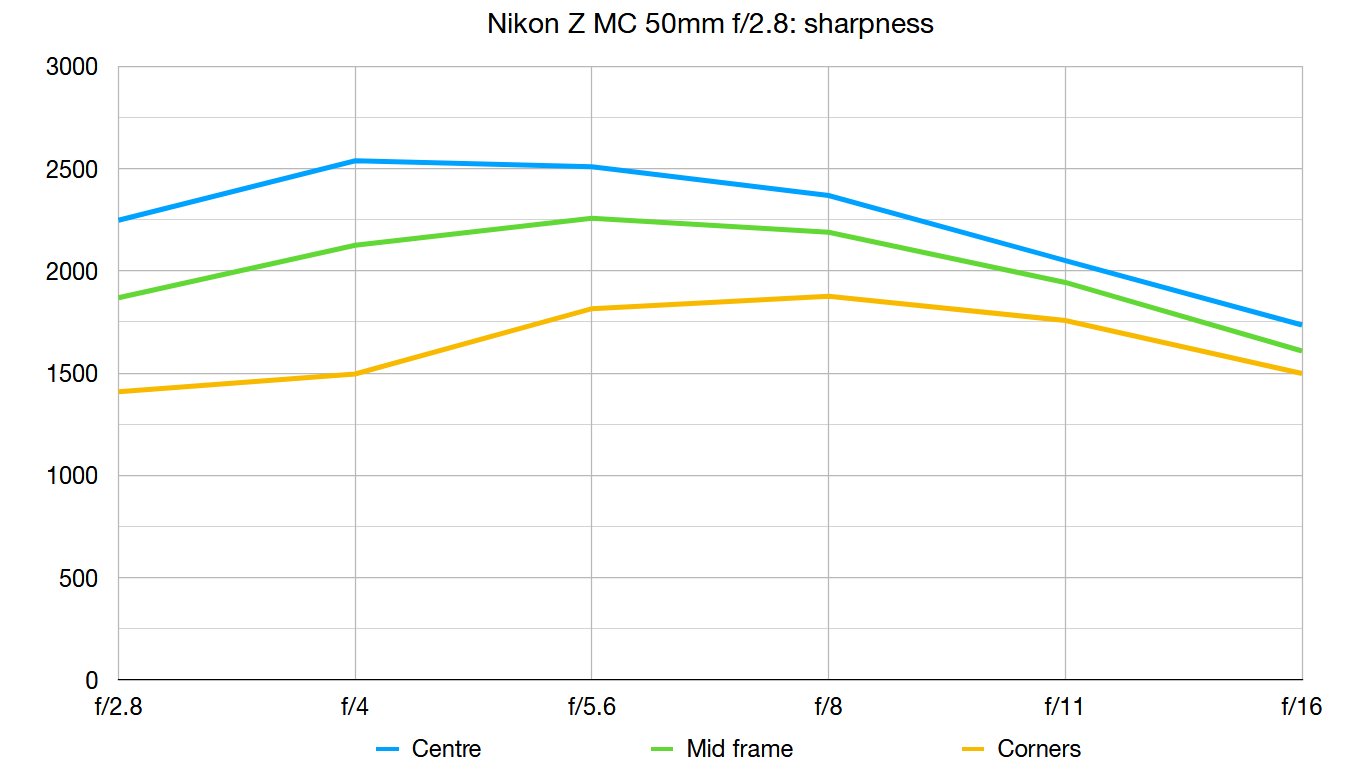
Centre-sharpness is epic from wide-open, through pretty much the entire aperture range. It remains excellent at the very narrowest aperture, which is important for a macro lens when you’re trying to gain even a little depth of field in extreme close-up shooting. Sharpness in the edges and corners lags behind that of the more up-market Z MC 105mm f/2.8 VR S but is still very good.
Fringing:
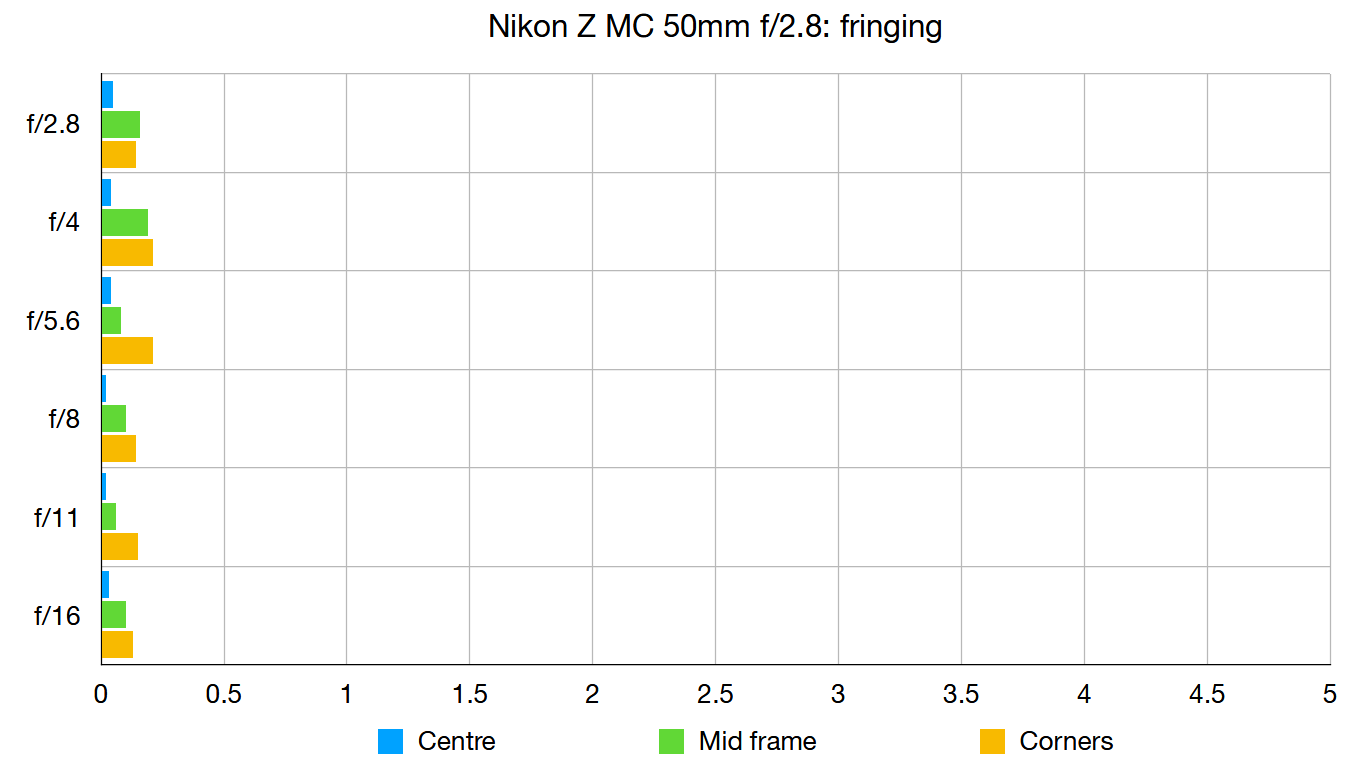
Lateral chromatic aberration is entirely negligible, even in the extreme edges and corners of the frame, while axial chromatic aberration is equally well controlled even when shooting wide-open at f/2.8.
Distortion: 0.7
There’s just the merest hint of pincushion distortion but this will generally go completely unnoticed even when shooting straight-sided objects. And that’s even with in-camera correction switched off.
Verdict
There’s a lot to love about this lens. It’s refreshingly compact and lightweight, making it a good travel companion for a full-frame Z-series body, while also working really well as a short telephoto prime for DX format (APS-C) Z-series cameras, where it has an effective focal length of 75mm. It’s entirely capable as a 50mm standard prime for general shooting but really comes into its own for extreme close-ups. The only catch is that, to enable full 1.0x macro magnification, the closeness of the shooting distance might be a little too extreme, with only 2 inches between the front of the lens and what you’re shooting.
Read more:
The best Nikon cameras
The best Nikon lenses
The best macro lenses
Best ringflash for macro photography
The best tripods
Matthew Richards is a photographer and journalist who has spent years using and reviewing all manner of photo gear. He is Digital Camera World's principal lens reviewer – and has tested more primes and zooms than most people have had hot dinners!
His expertise with equipment doesn’t end there, though. He is also an encyclopedia when it comes to all manner of cameras, camera holsters and bags, flashguns, tripods and heads, printers, papers and inks, and just about anything imaging-related.
In an earlier life he was a broadcast engineer at the BBC, as well as a former editor of PC Guide.
